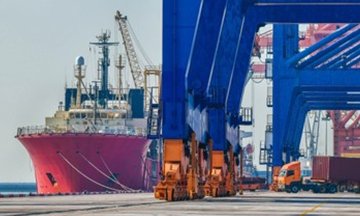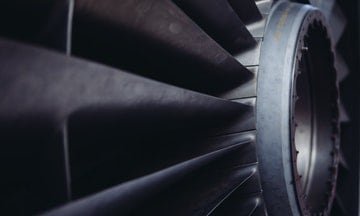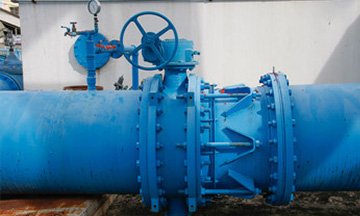Lifting Equipment Inspection Course
| Date | Format | Duration | Fees | |
|---|---|---|---|---|
| 22 Apr - 26 Apr, 2024 | Live Online | 5 Days | $2250 | Register |
| 10 Jun - 12 Jun, 2024 | Live Online | 3 Days | $1750 | Register |
| 26 Aug - 06 Sep, 2024 | Live Online | 10 Days | $4495 | Register |
| 16 Sep - 27 Sep, 2024 | Live Online | 10 Days | $4495 | Register |
| 06 Oct - 10 Oct, 2024 | Live Online | 5 Days | $2250 | Register |
| 25 Dec - 27 Dec, 2024 | Live Online | 3 Days | $1750 | Register |
Course Overview
Lifting equipment are used to lift and transfer miscellaneous heavy materials from one location to another or from one height to another e.g., heavy machinery components, building materials, raw materials and finished products etc in the industry since they are not feasible to do manually. Examples of lifting equipment include, but are not limited to, mobile cranes, tower cranes, electric overhead traction cranes, hoists, winches, chain pulley blocks etc.
Do lifting devices need to be certified?
Oil, gas and chemical industries’ installations increasingly use such lifting equipment not only during the construction and commissioning stage but also during steady-state operations. However, if these pieces of lifting equipment fail while in service, consequences can be very dangerous, depending upon whether their lifted loads or the lifting equipment themselves collapse on the people or live hydrocarbon equipment and vessels, resulting in fire and explosion. The health (integrity) of such lifting equipment must be ensured through well planned and well-executed certified inspections.
How often should lifting equipment be inspected?
Lifting equipment should have their baseline (initial) inspection to record where such equipment(s) originally stand with regards to their original condition (health). Subsequent inspections record how their health conditions are maintaining or deteriorating and help the maintenance engineers to plan the timely servicing, repair and replacements to avert disastrous failures while in operation.
This Zoe training course will empower attendees with comprehensive knowledge of the need and procedures for Lifting Equipment Inspection. The interrelationship between Inspection/Asset Integrity Management and HSE excellence is seen as an important aspect in the industry.
Hence, this course will help develop a very important aspect in personnel’s professional journey which will eventually benefit whichever company they would work for.
Course Objectives
This Lifting Equipment Inspection course will equip the participants to:
- Learn about lifting equipment
- Comprehend the examples of lifting equipment
- Discuss the risks associated with the operation of the lifting equipment
- Learn various baseline inspection techniques to ensure the integrity of the lifting equipment
- Learn various in-service inspection techniques to ensure the integrity of the lifting equipment
- Note the importance of load testing of the lifting equipment
- Understand Personnel Lifting Platforms as different from material lifting equipment
- Understand certification requirements of the lifting equipment
- Appreciate good operating practices for the lifting equipment
- Maintain/manage a good spares strategy for the lifting equipment
- Understand inspection for changes in the crane
- Comprehend inspection of cranes in regular use/ not in regular use
- Comprehend the importance of Close-out from inspection recommendation
- Address Insurance, Legal and Statutory aspects of such lifting equipment inspections
- Experience various incidents involving the lifting equipment and their Root Cause Analyses
Training Methodology
This collaborative ‘Lifting Equipment Inspection’ training program will comprise the following training methods:
- Lectures (Tutor-assisted online and classroom as per prevailing situations/requirements)
- Seminars & Presentations
- Group Discussions
- Assignments
- Case Studies & Functional Exercises
Calibrated with Zoe’s training methodology, this course implements the ‘Do-Review-Learn-Apply’ model.
Organisational Benefits
Companies who nominate their employees to participate in this ‘Lifting Equipment Inspection Course’ course can benefit in the following ways:
- Minimize disastrous adverse impact on personnel safety and business continuity
- Preventing the live failure incidents of the lifting equipment
- Implementation of recommended actions from the inspections
- Reduce greatly the costs associated with failure incidents
- Lowering/Negating insurance premiums, compensation to employees, legal fees and regulatory/statutory penalties
- The culture of good inspection practices and strategy leaves a positive impact on customers, lenders, insurance underwriters and management system certification agencies.
- Good impression on regulatory & statutory authorities, industry and societal spectrum at large
Personal Benefits
Individuals who participate in this ‘Lifting Equipment Inspection Course’ can gain from it in the following ways:
- Skill development/continual professional development
- Development of confidence by understanding the importance of inspection and good practices involving the lifting equipment, and thus proving to be a successful professional
- An individual develops an inspection/surveillance attitude towards his professional, domestic and social life with knowledge gained in this training course
- Understanding of regulatory compliances around the subject
Who Should Attend?
This ‘Lifting Equipment Inspection Course’ would be suitable for:
- Inspection/Asset Integrity/ QA-QC/Engineering/Technical Design professionals at all levels (trainees, interns, technicians, officers, managers and others)
- All steady-state line-functions at all levels (trainees, interns, officers, managers, senior managers in operation, maintenance, inspection, engineering, other line disciplines)
- Middle Management and Senior Management (a smaller customized part of this course)
- Non-line functions such as office managers and planning executives
Course Outline
Module 1: The Lifting Equipment
- Basics: The shift from manual to mechanical lifting
- Industry reliance on lifting equipment
- Examples of lifting equipment and their applications
- Risks associated with the operation of the lifting equipment
- Importance of Inspection for the lifting equipment
- How ignoring small problems can lead to major accidents
- Assessment and Q&A
Module 2: Mobile Cranes
- Types of Mobile Cranes
- Baseline (initial) inspection records
- Routine/Pre-planned visual in-service visual Inspections and Pre-use visual Inspection
- Inspection of physical damage to crane components, corrosion, and a sign of ageing
- Inspection of wind indicator
- Specialized Non-Destructive Testing (NDT)
- Load testing and load cells
- Labelling SWL (Safe Working Load) post load testing and colour coding
- Inspection of the prime mover (IC engine/Electric motor)
- Inspection of land conditions and stability of operation
Module 3: Tower Cranes
- Tower Crane – Broad Categories
- Baseline (initial) inspection records
- Routine/Pre-planned visual in-service visual Inspections and Pre-use visual Inspection
- Inspection of physical damage to crane components, corrosion, and a sign of ageing
- Inspection of wind indicator
- Specialized Non-Destructive Testing (NDT)
- Load testing and load cells
- Labelling SWL (Safe Working Load) post load testing and colour coding
- Inspection of the prime mover (IC engine/Electric motor)
- Inspection of foundation conditions and stability of operation
Module 4: Electric Overhead Traction (EOT) Cranes
- Types of EOT Cranes
- Baseline (initial) inspection records
- Routine/Pre-planned visual in-service visual Inspections and Pre-use visual Inspection
- Inspection of physical damage to crane components, corrosion, and a sign of ageing
- Inspection of wind indicator
- Specialized Non-Destructive Testing (NDT)
- Load testing and load cells
- Labelling SWL (Safe Working Load) post load testing and colour coding
- Inspection of building conditions housing the lift and stability of operation
Module 5: Hoists
- Baseline (initial) inspection records
- Routine/Pre-planned visual in-service visual Inspections and Pre-use visual Inspection
- Inspection of physical damage to hoist components, corrosion, and a sign of ageing
- Labelling SWL (Safe Working Load) post load testing and colour coding
- Inspection of the prime mover (IC engine/Electric motor)
- Inspection of foundation/support conditions and stability of operation
Module 6: Winches
- Baseline (initial) inspection records
- Routine/Pre-planned visual in-service visual Inspections and Pre-use visual Inspection
- Inspection of physical damage to winch components, corrosion and sign of ageing
- Labelling SWL (Safe Working Load) post load testing and colour coding
- Inspection of support conditions and stability of operation
Module 7: Chain Pulley Blocks
- Baseline (initial) inspection records
- Routine/Pre-planned visual in-service visual Inspections and Pre-use visual Inspection
- Inspection of physical damage to Chain Pulley Block components, corrosion, and a sign of ageing
- Labelling SWL (Safe Working Load) post load testing and colour coding
- Inspection of foundation conditions and stability of operation
Module 8: Best Practices, Insurance, Legal and Statutory Aspects
- Best Inspection Practices
- Understand Inspection for changes in the crane
- Comprehend Inspection of cranes in regular use/ not in regular use
- Insurance,
- Legal and Statutory Aspects
Moduke 9: Use of Personnel Lifting Platforms
- How is Personnel Lifting Platforms different from material lifting equipment?
- Critical inspection points: cages, anchor points, communication means
- Types of Personnel Lifting Platforms
- Baseline (initial) inspection records
- Routine/Pre-planned visual in-service visual Inspections and Pre-use visual Inspection
- Inspection of physical damage to crane components, corrosion, and a sign of ageing
- Inspection of Wind indicator
- Specialized Non-Destructive Testing (NDT)
- Load testing and load cells
- Labelling SWL (Safe Working Load) post load testing and colour coding
- Inspection of the prime mover (IC engine/Electric motor)
- Inspection of land conditions and stability of operation
Module 10: Incidents from Lifting Equipment Failures
- Failure incidents in poor design
- Failure incidents in poor inspection, maintenance, and operation practices
- Failure analysis/ Root Cause Analysis
- Importance of training and continuous professional development (CPD) for inspection personnel and crane operators











